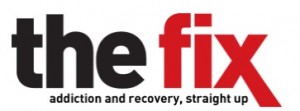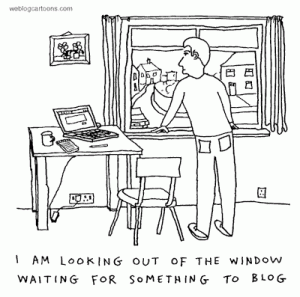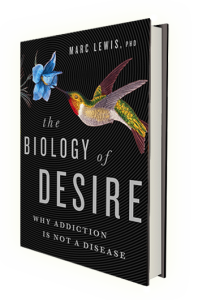The scene of the crime
 Hello people! It feels good to be back in touch with you….as though you are my long-lost family. I have posted some comments, haphazardly, in response to recent comments of yours. For anyone still waiting for a reply from me, I’m sorry. I’ll be home in three more days and I will catch up soon. Or if I miss you and you want to hear from me, just nudge me with a note from the “contact” page.
Hello people! It feels good to be back in touch with you….as though you are my long-lost family. I have posted some comments, haphazardly, in response to recent comments of yours. For anyone still waiting for a reply from me, I’m sorry. I’ll be home in three more days and I will catch up soon. Or if I miss you and you want to hear from me, just nudge me with a note from the “contact” page.
This trip has been amazing: stressful, tiring, but also satisfying. I’ve stopped in a lot of cities, done a lot of interviews, a few readings, a few talks, written a couple of pieces while waiting at airports, and schmoozed with a lot of people, both media types and scientist types – addiction scientists – and even a few ex- or wish-they-were-ex- addicts. They are – we are – everywhere.
For example, last night, after I finished talking to an audience of about 200 people (scientists/practitioners and “normal” people), one young woman comes up to me while I’m packing up my laptop, and says unsurprising things, like “…really interesting talk. I do research on rats…self-administration of nicotine…test for increased activity in cholinergic neurons…etc, etc.” After a short pause, she continues, “I have a problem, too. I guess you’d call it an addiction,” and she looks down shyly. Then she looks up and our eyes lock and I recognize her as someone just like me, a much younger female version, but there she is, divulging her struggles to a stranger. Struggles with an eating disorder, a self-destructive compulsion, and I notice how thin her hand is after it’s just shaken mine. I look at her more closely and see her anxiety, all wrapped up in her skinny body, I notice the openness in her face, and I instantly like her: she’s got the courage and dedication to fight addiction and study it at the same time. I admire her, feel for her, and hope that she will win in the end.
Last night’s talk was the climax of my trip. It was held in the main auditorium of the main psychiatric institute in Toronto, called CAMH, Centre for Addiction and Mental Health. I always thought that was a weird name, as if they’re dispensing addiction and/or mental health – take your choice. Anyway, the posters advertised Marc Lewis, no title, with my face next to a big picture of the book, and in huge letters: Memoirs of an Addicted Brain. Three TV cameras were being set up when I entered the auditorium. I was pretty nervous. But once I started speaking, and once I started to focus in on the faces of the audience members – interested, intelligent, and engaged, with friendly expressions, no hint of the suspicion or judgement I’d half-expected – once I got going, I lost my nervousness and the words started to flow.
When I was done people clapped and clapped, and I felt like a star. But even at that proud moment I was very much aware, as I had been all day, that I was standing in the building where I’d done my research, my rat research, for my Bachelor’s (undergrad) thesis, some 34 years ago. And this was the place where I first got serious about stealing drugs.
The halls and the stairwells still looked familiar, and when my host pulled out his master key, on the way back from the auditorium, I vividly recalled the days when I’d had my own master key…and used it to go from office to office, lab to lab, late at night, after I’d finished with my rats…looking for drugs. And finding them! Or else grabbing a prescription pad off someone’s desk, ready for a little art work, imitating doctors’ classic messy handwriting, working in those Latin symbols, so I could bounce into a pharmacy later that night, coughing as convincingly as possible, and find my way to a bottle of Hycodan or Tussionex.
So I was a little nervous all day yesterday, not only about doing my biggest public lecture of the tour, not only about doing it on TV (yikes!), but about being recognized or found out somehow. I kept imagining that some old researcher would come walking down the hall toward me and his eyebrows would suddenly shoot up in surprise, then drop down in an angry scowl. So you’re the one! You’re the guy who stole all the morphine. You’re the reason the supply kept dwindling through the winter of 1978. Caught you!
Actually, the morphine came from the basement of the Psychology building, a few blocks away. But I’d scoop out a gram or two (we’re talking pure morphine sulfate, powder, in a couple of jars the size of peanut butter jars) and bring it with me to the CAMH building (then called the Clarke Institute). And I’d take a little break, somewhere around rat #15, when things were getting really boring – except for the wave of excitement building in my stomach – and I’d take my precious powder, mix it with water in a small plastic vial, shake it, strain it, load it into a syringe, and shoot it into my arm in a tiny locked room, with only the rats to judge me.
I did this for almost a year. And of course I always wondered when I’d get caught. When would someone notice something, either here or in the Psych building? When would someone blow the whistle on this addict disguised as a psychology student?
I finally did get busted, about a year later, but not here in this building. I had left, intact, with degree in hand, and the shit didn’t hit the fan until graduate school in another city, when I began to steal from doctors’ offices, not from the cupboards of an underground lab. So only a few people around here could ever have known about the other me, the real me.
Tonight in my talk, I was both the person I was then and the person I am now, a weird hybrid – drug addict and neuroscientist – standing up at the podium, talking about how my book might be able to help people get a better handle on addiction. You take the uncompromising cookie-cutter of neural findings and sprinkle liberally with the complexities of real life, everyday life, captured in a memoir. Then you can get to addiction from both angles at the same time and you can make a little more sense of it than either perspective on its own. I talked about addiction as a developmental process, a self-perpetuating preference turned compulsion, a creeping, encroaching synaptic network overtaking the orbitofrontal cortex and striatum, crowding out other synapses that represented other goals (like friendship, success at school, or even just pizza and beer). I showed a picture of ivy proliferating from a few tendrils to a bushy mass.
And I talked about you! I talked about my blog, and all the people I’ve met through it. I talked about the guts it takes to fight something as insidious as addiction. I talked about ego fatigue and I tried to paint a picture of how hard we work, we addicts, to outsmart our impulses. Just try holding your arm straight out to the side, I told them. No problem…..for the first five minutes. But try it for an hour. Try it hour after hour, day after day. I sang your praises, dear readers. I cheered for you. I told them: contrary to popular belief, rather than being lazy, or weak, or self-indulgent, addicts work way harder than most people. Because they are determined to say NO to an overwhelming compulsion or desire, to overcome ego fatigue, to outsmart their cravings by changing something fundamental about how they view themselves, how they attend to the world, how they talk to themselves. They are the bravest people I know.
I told them how much I have learned from the people who write into my blog: about addiction, about recovery, and about the far reaches of imagination, courage, and determination – the strategies and eventual victories we achieve through hard work – so that we can feel decent, normal, better than normal, proud of ourselves…the way I felt tonight.
Thank you for that.
 actually induces shame with little or no validation needed. IFS calls this critic a manager — a part whose job it is to anticipate others’ reactions and try to avert worst-case scenarios. But notice: anticipation is a mental state, not a social exchange. It’s really just a belief we carry around with us.
actually induces shame with little or no validation needed. IFS calls this critic a manager — a part whose job it is to anticipate others’ reactions and try to avert worst-case scenarios. But notice: anticipation is a mental state, not a social exchange. It’s really just a belief we carry around with us. — one she’d already prepped with an exacto knife. Then Carla would say “Oh no!” and “Oh my!” (at timed intervals) while gazing at the child’s face. The poor kid would then look away, hide his or her head, and often protest: It’s not my fault! An internal shame-inducing “program” was now at full throttle.
— one she’d already prepped with an exacto knife. Then Carla would say “Oh no!” and “Oh my!” (at timed intervals) while gazing at the child’s face. The poor kid would then look away, hide his or her head, and often protest: It’s not my fault! An internal shame-inducing “program” was now at full throttle. As noted last week, the addict’s shame is so wounding because of lost connections with caring, loving others. So what’s left? How can we be soothed? IFS is all about establishing and reinforcing connections within us. The theory points to a calm, empathic centre in each of us. The part that’s not a part. They call it Self with a capital S. To me, that centre feels like a warm glow of self-forgiveness or self-compassion or just I’m-ok-ness, though of course words don’t do it justice.
As noted last week, the addict’s shame is so wounding because of lost connections with caring, loving others. So what’s left? How can we be soothed? IFS is all about establishing and reinforcing connections within us. The theory points to a calm, empathic centre in each of us. The part that’s not a part. They call it Self with a capital S. To me, that centre feels like a warm glow of self-forgiveness or self-compassion or just I’m-ok-ness, though of course words don’t do it justice. keep you company, so you don’t have to be so alone. I know it sounds almost trite. Oh, that’s self-compassion…we know about that. No, it’s not that simple. This is the act of connecting with a part that has been expelled — innumerable times — because that’s what shame does. A part that’s desperate for compassion…or, at first, at least, a bit of company.
keep you company, so you don’t have to be so alone. I know it sounds almost trite. Oh, that’s self-compassion…we know about that. No, it’s not that simple. This is the act of connecting with a part that has been expelled — innumerable times — because that’s what shame does. A part that’s desperate for compassion…or, at first, at least, a bit of company. Cece, that firefighter can also be helped by the part that’s not a part. It can be talked to — hey there! — but not by The Critic. Rather, it needs to hear from the Self, which can say: I’ve got your back. I’m not the familiar part that’s always screaming at you, that critic. I’m going to help take care of things. You don’t have to do all this drastic stuff yourself. And just between us, you do leave quite a mess.
Cece, that firefighter can also be helped by the part that’s not a part. It can be talked to — hey there! — but not by The Critic. Rather, it needs to hear from the Self, which can say: I’ve got your back. I’m not the familiar part that’s always screaming at you, that critic. I’m going to help take care of things. You don’t have to do all this drastic stuff yourself. And just between us, you do leave quite a mess.

 Informed by unparalleled neuroscientific insight and written with his usual flare, Marc Lewis’s The Biology of Desire effectively refutes the medical view of addiction as a brain disease. A bracing and informative corrective to the muddle that now characterizes public and professional discourse on this topic.” —Gabor Maté, M.D., author of In The Realm of Hungry Ghosts: Close Encounters With Addiction
Informed by unparalleled neuroscientific insight and written with his usual flare, Marc Lewis’s The Biology of Desire effectively refutes the medical view of addiction as a brain disease. A bracing and informative corrective to the muddle that now characterizes public and professional discourse on this topic.” —Gabor Maté, M.D., author of In The Realm of Hungry Ghosts: Close Encounters With Addiction
Recent Comments